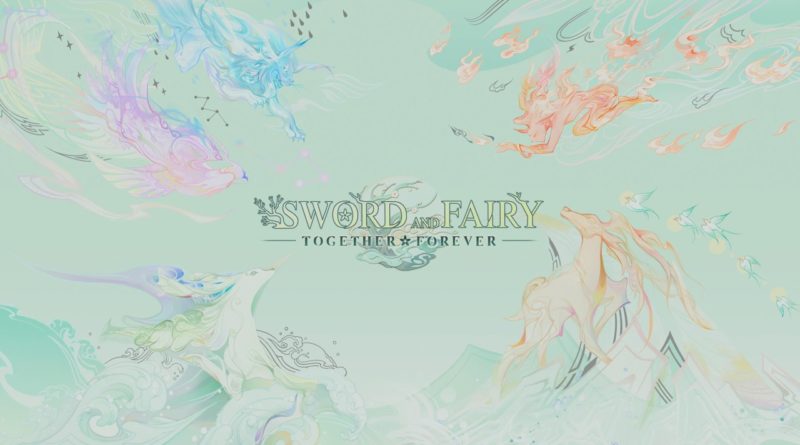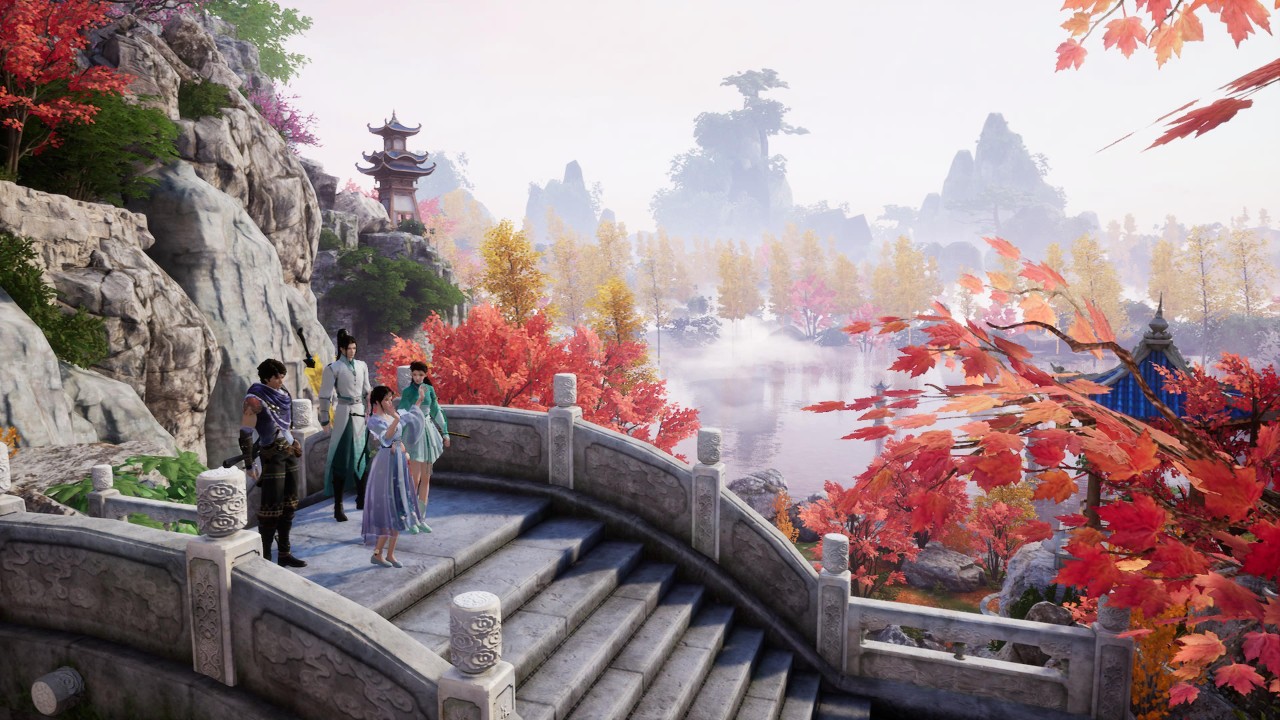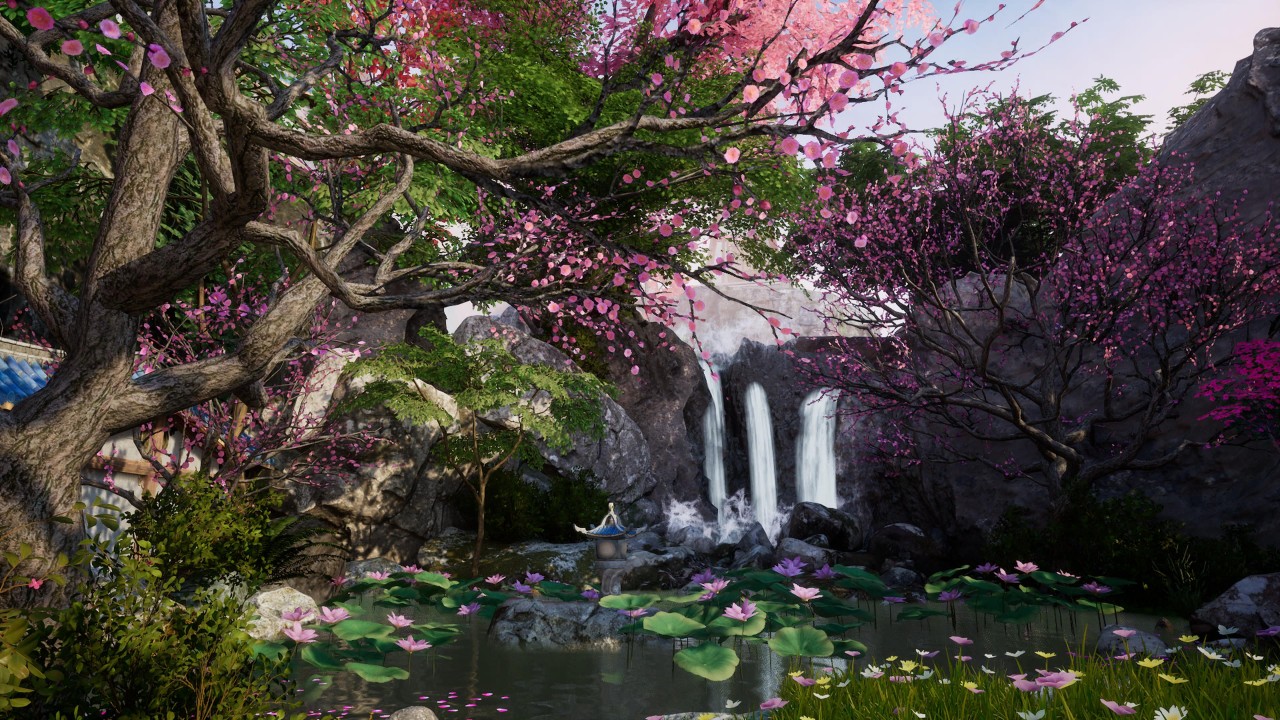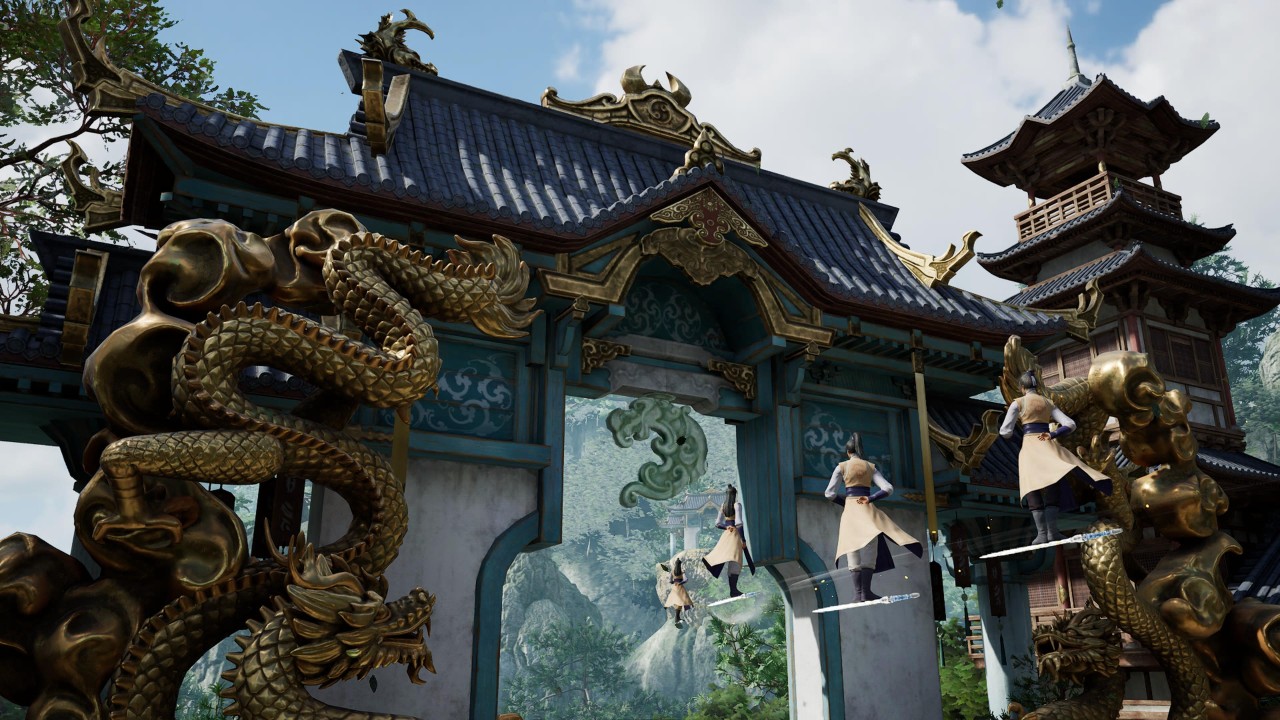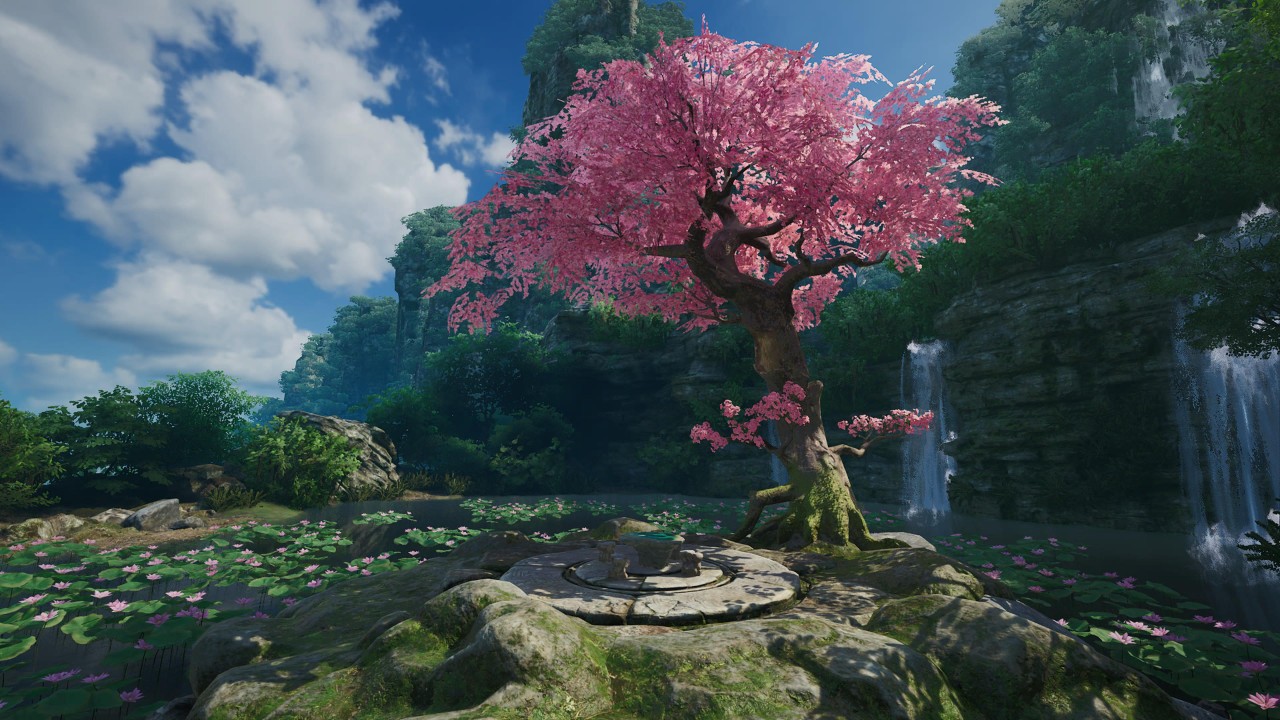Sword and Fairy: Together Forever Review (PS5) – Niche Franchise, Hidden Gem
A niche Chinese Wuxia RPG franchise gets its second western release in its 27-year history, but is it any good? The Finger Guns Review:
The Legend of Sword and Fairy franchise of Wuxia RPGs has been ongoing since 1995, with 10 main entries, more than a dozen spin-off games, and even TV adaptations in its native China. However, the series hasn’t seen many official releases outside the 6th and 7th main titles. The 7th entry was released worldwide in October 2021 and has now been repackaged as Sword and Fairy: Together Forever. It seems like an attempt to give newcomers to the series an easy entry point by removing the number from the title, much like Yakuza 7 did with Yakuza: Like a Dragon. I hope it pays off for them because Sword and Fairy: Together Forever genuinely surprised me with how much I loved it. It deserves some attention, although there are some definite flaws I’ll touch on later.
A Beautiful Journey
From the start, Sword and Fairy: Together Forever made an immediately strong impression based on its visuals. Simply put, the game is gorgeous. I saw a ton of environmental variety throughout the ~25 hours it took me to finish the game. Each of the Sword and Fairy’s small, open areas is brimming with vibrant colours and beautiful vistas. It’s even got lovely little details, like the bottom of a wok having a subtle, shiny texture because of the oil at the bottom. Completely unnecessary but absolutely appreciated. I stopped multiple times throughout my playthrough to use the photo mode to capture the scenery. I’ll be popping a few images of the early game areas below. If anything, I wish the photo mode was a little more customisable beyond the relatively standard camera controls and a few filters and stickers.
It’s not just Sword and Fairy’s environments that look great, though. Character models are very detailed, with their clothes and hair swaying subtly in the breeze. Enemies are just as varied as the environments they roam, ranging from cute Leaf Spirits in the opening sections; to various Demons and Dragons later on. They’re all excellently animated, with combat particularly looking great thanks to gorgeous particle effects that trigger alongside your flashy abilities. Cutscenes have some genuinely impressive fight choreography, too. From its opening up until its ending, Sword and Fairy: Together Forever keeps delivering with its visuals.
To go along with the beautiful visuals is a genuinely fantastic soundtrack that evokes all the feeling you’d want in an adventure this grand, with an end-credits song (titled Together Forever) that is a lovely cherry on top, adding lyrics to Sword And Fairy’s title track.
It’s also worth noting that the game’s voice acting is entirely in Chinese, and while some scenes let you advance dialogue yourself, many more will play out naturally. Thankfully you can pause cutscenes any time with the touchpad, just in case you need to step away or get distracted by the real world.
A Touching Tale With Some Rough Edges
What wasn’t so immediately apparent was how much I’d really enjoy Sword and Fairy: Together Forever’s story and characters. It starts as a relatively run-of-the-mill adventure about Gods, Demons and Humans and the power struggles between them and within them. It’s a save the world story in the grand scheme of things. But within that story, there are some excellent, quiet moments between Sword and Fairy’s four protagonists and side cast. There’s a scene dedicated to a grandfather telling his granddaughter that he’s scared for her but knows she will push on regardless. There’s an entire quest that wraps up a protagonist’s past trauma in a way that was so genuinely moving that as they wept and were comforted by the party, I started sobbing myself. Within its save the world story is an ever-present romantic subplot between the protagonists that genuinely feels earned by the time the game wraps up. And the main plot points are great, too. It’s full of big moments that never disappointed me, even if some twists and reveals were obvious.
There’s an issue with Sword and Fairy: Together Forever’s writing that made itself evident from the get-go: the translation is pretty bad. It’s never unintelligible, and I understood the plot throughout, but it’s littered with syntax/grammar errors and some odd language choices that just felt off. Using words like “theurgy” instead of “ritual”, for example, made it read as if it was done as a first pass in Google Translate, and there was no attempt to improve the legibility of it from there. Some extra love in the translation would’ve helped make sense of things quicker, and it’ll likely be a turn-off for some buyers.
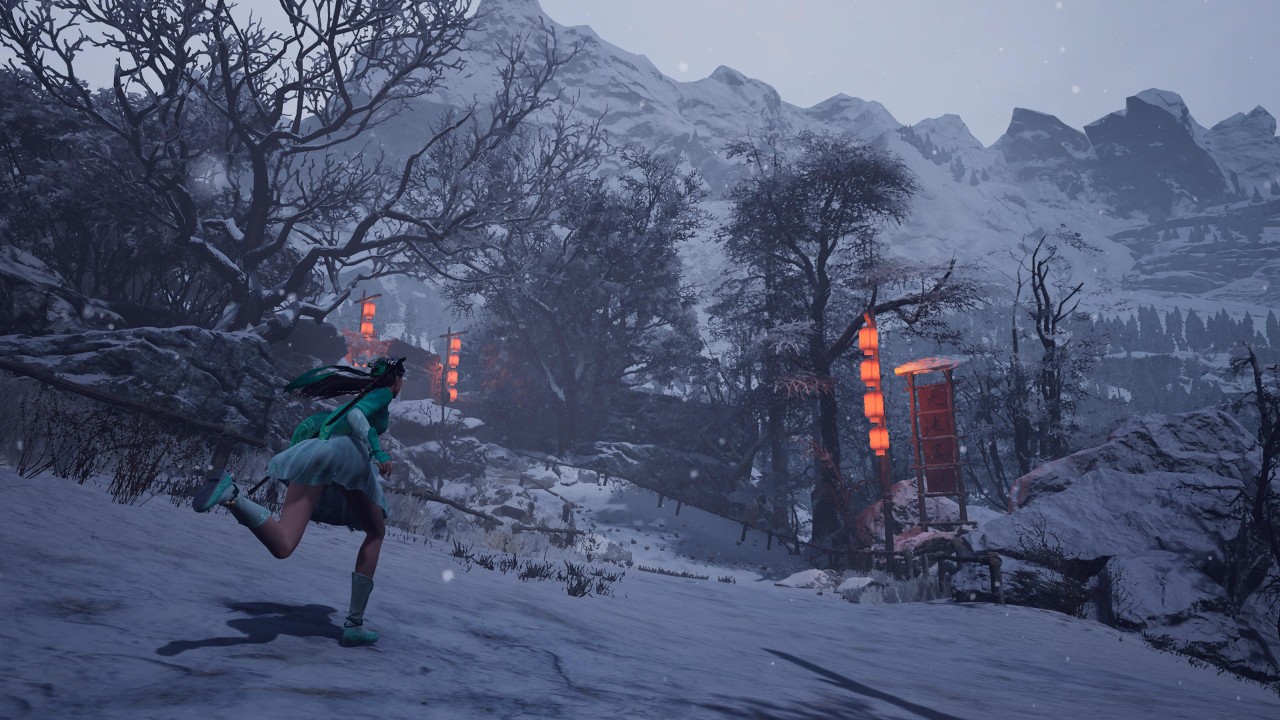
You’ve Got Spirit, Kid.
Let’s move on from Sword and Fairy: Together Forever’s audio/visual elements and get into its gameplay. Combat is the main thing you’ll be doing beyond exploring Sword and Fairy’s various regions, and it’s the first entry in the franchise that features real-time combat instead of the previous turn-based systems. It’s a pretty solid first attempt at an action RPG combat system that takes a little time to fully expand. Each of the four party members has a different role: you have 2 melee and 2 ranged characters you can swap to freely. There’s a heavy-hitting melee character with a range of powerful abilities and a faster melee character who was some healing and elemental abilities. I found the ranged characters were a little more mechanically interesting. One is a magic-focused attacker who can shift between multiple elemental buffs and abilities, while the other uses debuffs and status effects to deal damage over time.
Each character can have 8 moves mapped to buttons at any one time, usable by holding R2 and pressing the assigned face button, swapping between two sets of 4 abilities with L1. By the end of the game, I had every move available for each party member, and there’s a lot of variety to suit your preferred playstyle. You have basic attacks mapped to Square and heavy attacks mapped to Triangle, and you can combine these inputs to perform what the game calls “Joint Attacks”. Each character has 3 Joint Attacks, and each has a secondary effect specific to your current character’s move set. It’s a simple system, but it works well, and once I had 8 abilities per character, it became a lot more engaging. There’s a dodge system, too, but it only works on the ground and leaves any air combat feeling stiff by comparison. You can cancel out of most ground attack animations by dodging, letting you get around in fights effortlessly. You can even get a temporary damage buff by performing a dodge just before an attack hits. You can also fill the “Awakening Meter” by dealing damage, letting each character activate “Awakening Mode” to deal more damage and become invincible while it’s active. By filling the meter completely, each character can use a unique “Deity Summon” that lets you briefly control a unique Deity for each character and deal even higher amounts of damage.
There’s even a passive, upgradable element to Sword and Fairy’s combat. You collect various Spirits throughout the game (5 are mandatory, 3 are optional), and each has two passive buffs like higher HP/MP pools, increased experience and money from fights, or extended Awakening Meter/Deity Summon use time. These buffs can be upgraded by feeding the spirit some fruit that gives them XP to level up.
There are 3 difficulties to play through, with a fourth unlocking upon beating the game. I found regular combat encounters were pretty breezy throughout, but some later game boss encounters felt like a real challenge. It was never unfair, but there’s definitely a big gap between regular fights and bosses that could have been a bit smoother.
There’s a good, solid foundation established in Sword and Fairy: Together Forever, and should any more entries be made, I’d love to see it built upon and polished up a little to really make it shine.
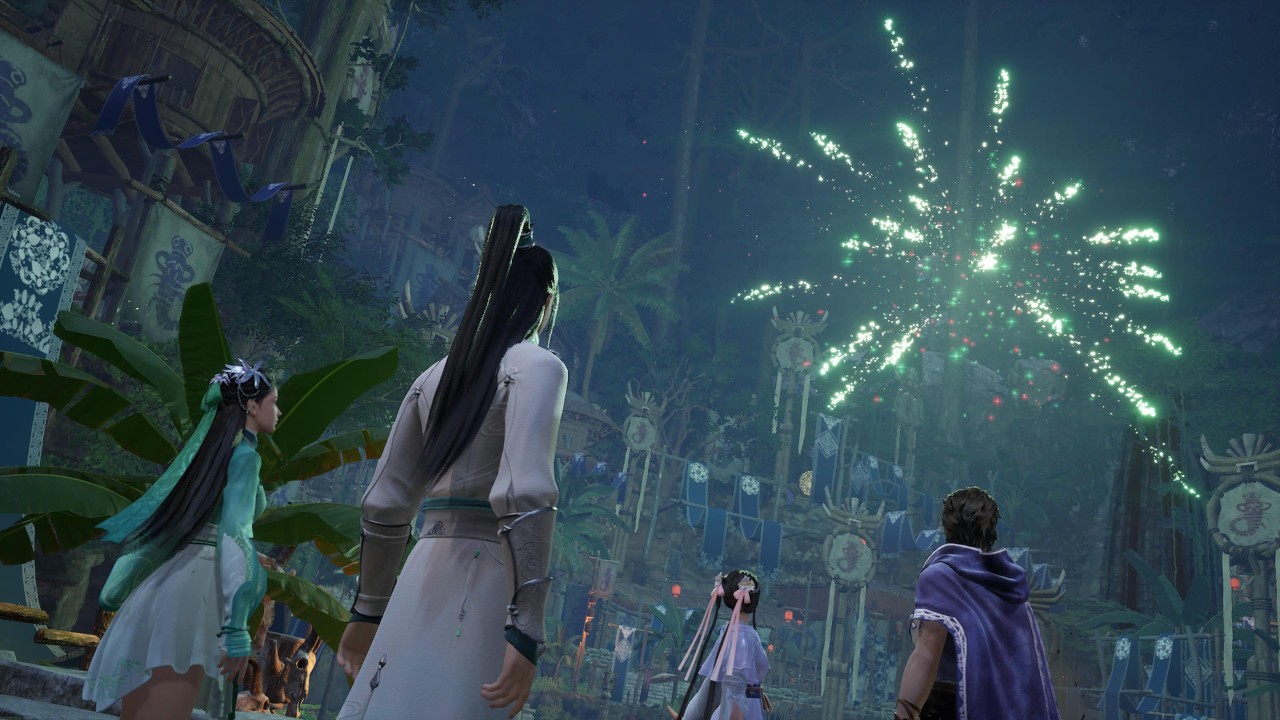
It’s the little things
Another area where Sword and Fairy: Together Forever really surprised me was its gameplay variety. There are a lot of extra mechanics peppered throughout the game that keep it from ever being boring. There are a ton of sidequests that, though somewhat standard, usually add some backstory to the world or even give insight into a protagonist’s past. There’s a series of platforming challenges which start off easy, but my hands were sweating by the final one due to its difficulty. You can play a deceptively simple card game named Journey Heaven – Earth that is a ton of fun. I ended up doing all of the available sidequests, platforming challenges and card games just because I was having such a good time with the change of pace.
Each new area along the main quest will also throw new, more often than not one-time, mechanics at you. There’s an ice sliding section where you dodge falling trees, some timing-based switch puzzles, a handful of stealth sections, pheasant hunting, and even a dancing minigame. They never overstay their welcome and are a great way to break up the long stretches of combat and exploration in the main quest.
Technical Troubles
At the top of the review, I mentioned that Sword and Fairy: Together Forever had some definite flaws, and I think it’s worth closing out on them. Alongside the translation issues I mentioned earlier, there are also some technical troubles here and there. The framerate is relatively solid throughout, but there was some slowdown in a few of the game’s denser areas. I also noticed that some animations in cutscenes looked choppy as if they were locked at 30fps. And while the game’s animations are overall excellent, transitions between them sometimes look abrupt and stiff. There’s some very noticeable pop-in throughout Sword and Fairy, too, especially in busier environments. It’s not relegated to environmental objects, either. I had groups of enemies pop into existence about 10 metres from my character on several occasions. There was also an entire lake that was just missing its texture and displaying Unreal Engine’s default grey checkerboard. It became extra noticeable when a boss fight occurred at the lake’s edge. When so much of the game looks as great as it does, you can’t help but be drawn to the parts that don’t quite match up. There were also some UI inconsistencies, like text appearing squashed or stretched, and some button prompts in menus would display Xbox controls instead of PlayStation ones.
I also encountered a handful of bugs that forced me to reload my save, like characters not animating correctly or cutscenes freezing. And the biggest issue for me, besides Sword and Fairy’s translation, was that my PS5 hard crashed once during my playthrough. I didn’t lose more than a minute or so of progress, as the game autosaves relatively regularly, but I will admit I panicked when it happened.
All this to say, Sword and Fairy lack some polish that is absolutely worth mentioning. And while it’d obviously be a better package if they weren’t present, I came away from Sword and Fairy genuinely satisfied and pleasantly surprised. I’d have likely felt different had they affected my playthrough more dramatically, but even with these issues, it’s one of my favourite games all year.
A genuine diamond in the rough kind of game. Sword and Fairy: Together Forever constantly had my attention with varied gameplay, diverse and gorgeous locations, fantastic pacing and some genuinely touching character moments. If not for a handful of technical issues and a wonky but still understandable translation: Sword and Fairy: Together Forever would’ve scored higher. I loved it, regardless.

Sword and Fairy: Together Forever releases on PlayStation 4 and PlayStation 5 (reviewed) on August 4th. The PC Version, titled Sword and Fairy 7, is available now.
Developer: Softstar
Publisher: eastasiasoft
Disclaimer: In order to complete this review, we were provided with a promotional copy of the game. For our full review policy, please go here.
If you enjoyed this article or any more of our content, please consider our Patreon.
Make sure to follow Finger Guns on our social channels –Twitter, Facebook, Twitch, Spotify or Apple Podcasts – to keep up to date on our news, reviews and features.
